
Alpkit's updated range of headtorches are sold on their brightness, comfort, long battery life and, of course, their price. It's promised they'll perform whether you are running, walking, climbing or mountaineering. I put two of their models - the Qark and the Prism - to the test. It appears Alpkit have listened to much of the feedback on previous models, to provide good performance and quality based on the users' chosen range of activities, without needing to break the bank.
The Prism is tough and well made, but for me I think the powerful and versatile Qark has the edge as an all-round mountain headtorch - and at just £30 it's hard to argue with the value!
Prism - £39
The prism is a rugged headtorch, perfect for climbers or walkers who willingly put themselves through outings in the most miserable of conditions. After recent use, I'd expect it to last through many more trips where durability is of high importance and some suffering could be likely.
Brightness
The Prism's white LED has five lighting settings; high (250 lumens), medium (120 lumens), low (80 lumens), flashing and a 10 second boost.
On the 400 lumen 10 second boost, the narrow beam easily shines far enough (135m according to Alpkit) to inspect an abseil route in the dark, or your descent down a hazardous slope or gully. I find the boost particularly useful when route finding, as usually I only need a quick inspection into the distance, before instantly returning to sorting ropes/belaying or viewing a map. With this there is no further worry of eating into burn time or the hassle of cycling through settings to manually switch back to a more suitable light level.
On 250 lumen high, The Prism's spot distance is impressive for the power. I haven't measured it accurately, however whilst on The Comb (Ben Nevis), I could track my spot across the side of Tower Ridge, which I thought was quite impressive. The spot in general feels quite focused, and in most cases has been more than adequate when picking out features in the distance to follow a route ahead. However with a 3hr burn time, it is maybe best to limit use on this setting unless really needed.
Although the beam is relatively narrow, on lower settings the Prism doesn't leave you feeling dazzled or having a sense of tunnel vision - a symptom I can often feel in winter with the reflection from snow. This is ideal when on a long plod, by opening up a bit more peripheral vision and extending the burn time significantly (10-14 hrs for med-low, respectively).
Weight
The prism weighs 145g, which appears reasonable given the toughness. I would comment that most of this weight is concentrated at the front, and crucially extended out from the head instead of spread flatter across the forehead as in some designs. This creates a little more leverage, and when running or even just taking heavy steps downhill, I have found the Prism has a tendency to rock and shake. This can range from being reasonably distracting watching your beam bounce every step, to very frustrating when picking up speed.
I have repeatedly had to readjust where it sits on my head when using the Prism without the overhead strap. Usually I have tried to solve this by tightening the head strap, and although this is useful for the short term, I then build up a slight ache due to the degree of tightness I've had to set this to.
Fit
The elasticated strap is a fairly average width, reasonable for comfort and not too wide and padded that it has caused sweating, which I find particularly annoying. I have found the overhead strap to be necessary to reduce the tightness I keep the headtorch at due to the wobble discussed above.
The large rubber head mount is shaped comfortably to the forehead and evenly spreads the torch weight across this area, so there are no pressure points digging in as with harder plastic components.
Attaching to a helmet (BD Vector) seems fine. The rubber mount at the front isn't excessively wide and when mounted there doesn't seem to be too much wobble unless you are really shaking your head.
Robustness
The first impression the Prism gives after handling is the sense of robustness; if you are looking for a torch that can handle being dropped, smacked off rock, submerged in water and caked in mud for good measure, then the prism will perform. The build quality is clearly superior to the breakable plastic feel that I have had with many previous head torches.
The tough aluminium body has delivered a highly durable product with secure and faultless joins between components. Dust and water penetrating through any part of the body hasn't occurred, due to the tight rubber gaskets. The thick tough rubber mount, which the housing is securely fitted to, has ensured an ability to absorb shock loading and allows for no areas of weakness to compromise product integrity after many rough days out.
With all of this it is unsurprising that the Prism is drop proof from 2 metres and able to be submerged up to 1 metre. The IPX7 rating and 3 year alpine bond has put me at ease that I won't be breaking this torch anytime soon.
Battery and Charging
The Li-ion rechargeable battery seems to ensure a good continued power output and has continued to perform in lower temperatures, even when I have stored it in a cold hard shell pocket, before needing it at the end of a long day winter climbing.
The Prism charges through micro USB so I have had no worries if bringing a battery pack on a multiday trip. However if you are looking to use this multi-day and don't have a battery pack then you may need to invest in one, as the Prism doesn't take standard batteries.
Usability and Features
Whilst the Prism may lack certain features, i.e. a red light to maintain night vision, the single button is extremely easy to find with large gloves and to then cycle through the five settings. I have often been frustrated with multiple buttoned torches when I predominantly use only one setting or button. The cylinder head is easy to grasp and confidently know that you will press on first attempt.
The button is single press to turn on, therefore there is a potential for the torch to turn on in your bag or pocket. However, I have found if it is stored with the button tilted into the rubber head mount, then this should avoid any likelihood of this occurring.
The head tilt is fully 180 degrees, which is plenty (although 90 degrees upwards would never be required whilst in use, this does provide the security of not switching on whilst stored). The simple design of the tight fitting rubber mount around the head has ensured the tilt angle doesn't change during use.
Alpkit say:
USB rechargeable waterproof and drop proof head torch with 400 lumen boost mode that can cope with whatever you throw at it, ideal for adverse conditions and remote places. Prism is our gnarliest head torch.
- Weight: 145 g
- Size: 77 x 46 x 61 mm
- Light output: 250 lumens (400 lumen boost)
- Bulb: 1 x Luxeon T white LED
- Energy: 1 x 3.7 V 2000 mAh proprietary Li-ion rechargeable battery (500 battery cycles)
- IP rating: IPX7 (Protected from total dust ingress. Protected from immersion between 15 centimetres and 1 meter in depth.)
For more info see alpkit.com
Qark - £30
After using the Qark throughout autumn and winter I have become quite a fan, and especially like the flood to spot adjustment. Considering the brightness and performance you get for the price, this really is one of the best value head torches out there.
Fit and Comfort
The Qark uses the same elasticated headband and simple slide tightening system as the Prism. The head unit is a harder plastic and can dig in ever so slightly after extended use (very minor). It doesn't come with the wide and more padded headbands that are seen in more premium headtorches, although this is reflected in the price. I haven't found the need to use the overhead strap as much as with the Prism, unless moving fast where slippage starts to become more of an issue. But at 95g it feels light on the head.
Battery and Charging
The Lithium-Polymer battery pack provided is rechargeable but the Qark can also take 3 x AAA if you are looking for continuous use, or you're travelling without a charger. I much prefer a torch with USB charging to avoid the cost, hassle and waste of batteries, and if I'm on a last minute trip and haven't charged prior to leaving, I can still charge my Qark in the car on a long drive to the destination.
I do find it slightly confusing why Alpkit don't offer extra battery packs (as many other brands now do), as this would be an ideal investment for continuous use. However, at the moment I can only see AAA batteries sold separately on their website.
A major concern I have with the battery in the Qark is its ability to handle cold conditions. For example, during this winter I car camped (with a fully charged Qark outside my sleeping bag), and the next morning the torch immediately and repeatedly turned itself off when I was trying to use it. I was able to change to AAA and continue use, however this could be quite alarming. Imagine you'd kept it in a cold outer pocket or a pack all day when climbing, and then had to deal with a benightment. I assume this is an issue with the Li-Polymer battery, so on future winter climbs and hill days I would always take spare AAA batteries if benightment is a possibility.
Brightness and Burn Time
On highest setting the Qark definitely is dazzling, at 580 lumens - completely able to pick out the detail of an entire pitch, a lengthier trail or an abseil line. Adjusting to flood has avoided me developing any tunnel vision, or if I have required a brightly lit area whilst quickly navigating technical rocky terrain.
Turning down to medium white light (270 lumens) will increase burn time significantly from 2hr30min to over 5hr10 (I measured slightly less inside than the 5hr30 claimed by Alpkit). On this setting I have found the beam distance still to be completely adequate when route finding, and more frequently I remain on this when requiring some performance from the torch.
When I have been concerned about burn time, the lower setting (30 lumen) gives a substantial increase (15hrs) and I have used this across multi days on a single charge. On this setting I have no issues if following a well defined or known trail for prolonged periods, and I only need to switch to higher settings when the much reduced spot distance at 30 lumen isn't adequate.
Robustness
The Qark definitely feels like a drop down in build quality from the Prism, with a predominately plastic housing. The focus control adjustment does have slightly excessive play which can shake when running, however this has not affected the level of flood/spot adjustment I have set to. Reinforcement does come in other areas that matter such as the metallic lens tube. When on full spot this protrudes slightly and is the most likely part to receive a damaging blow if dropped or hit by an object.
Given all this, the Qark is still guaranteed to 3 years and comes with a IPX6 rating to protect from total dust ingress - and after using in prolonged wind and rain in the hills, I cannot argue this claim.
Usability and Features
The Qark incorporates a red light setting, which I always find useful if out on a clear night and wanting to maintain some night vision when stopped looking up at the sky. In order to get to this setting you have to first cycle through all the bright white light settings, which does compromise night vision a bit. I'd argue that a press-and-hold for the red light settings would be more practical.
If using with larger gloves then the button may be slightly harder to find, however I haven't had an issue and as this is the only button, there is no mistaking it and clicking the wrong setting.
Head tilt is a full 90 degrees, more than adequate for use on the go, and when stopped to tilt downwards to read a map or avoiding blinding others.
My favourite feature of the Qark is the easy-to-use rotation from spot through to full flood. This is particularly great when moving fast and quickly updating the 'sweet spot' is desirable, i.e. transitioning between different types of terrain. Even with gloves there is no fumbling around to get your desired adjustment level, it's an easy twist from full spot when looking ahead at a route, to a full flood if needing a huge periphery.
Alpkit say:
580 lumen rechargeable head torch. Compatible with AAA batteries for when you're recharging your battery pack, it's perfect for climbing, trekking, mountaineering, and multi-day adventures. With a brightness range of 30 – 580 lumens and a red front light, Qark delivers the right lighting whether you need to see every pebble and stick on the trail or are just reading in your tent.
- Light output: 580 lm
- Bulb: 1 x XP-C Cree white LED; 1 x O.SW Nichia Red LED
- Energy: 1 x 3.7 800 mAh proprietary Li-polymer rechargeable battery pack (Charge time: 2.5 hrs) or 3 x AAA alkaline batteries
- IP rating: IPX6 (Protected from total dust ingress. Protected from high pressure water jets from any direction.)
For more info see alpkit.com



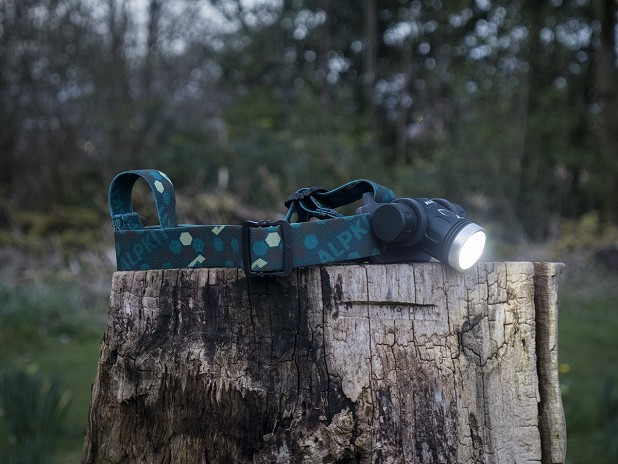
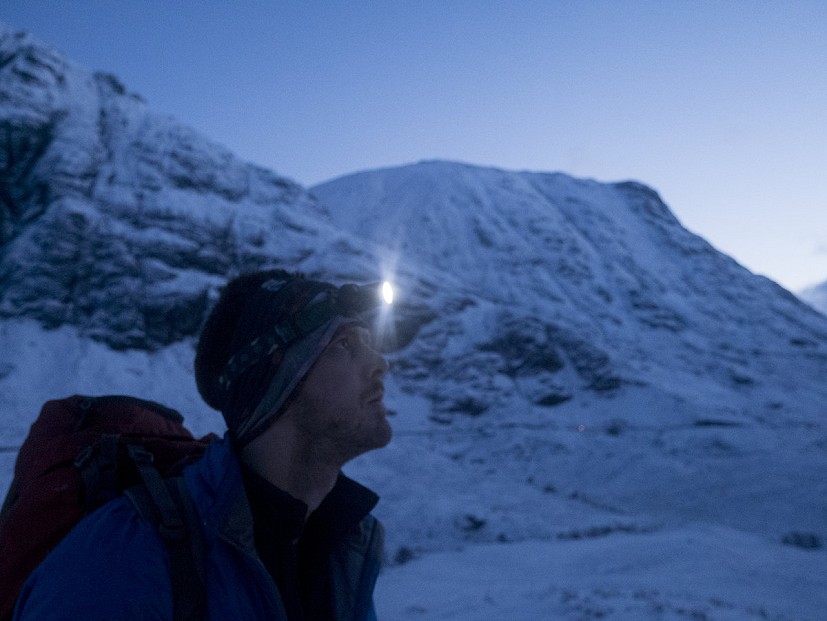
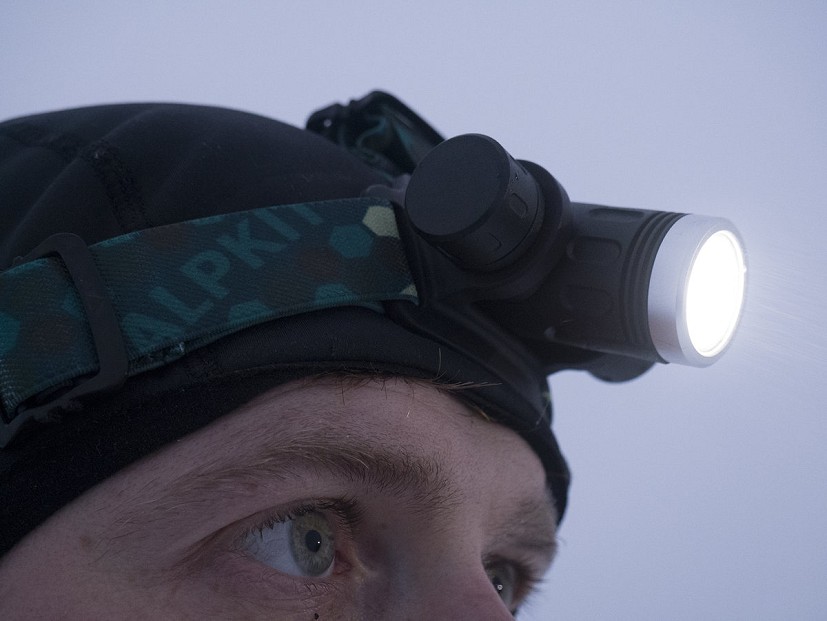
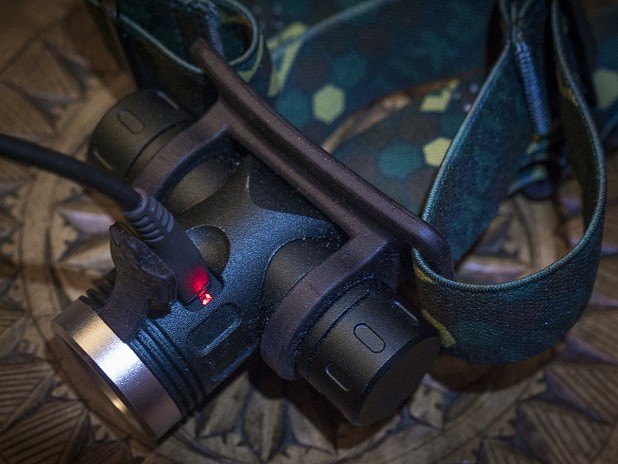
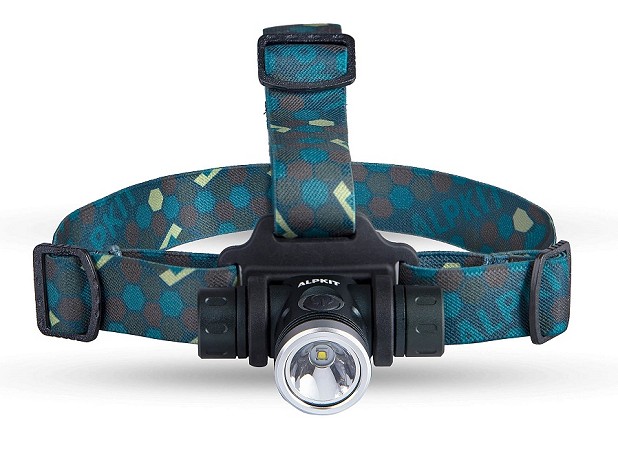
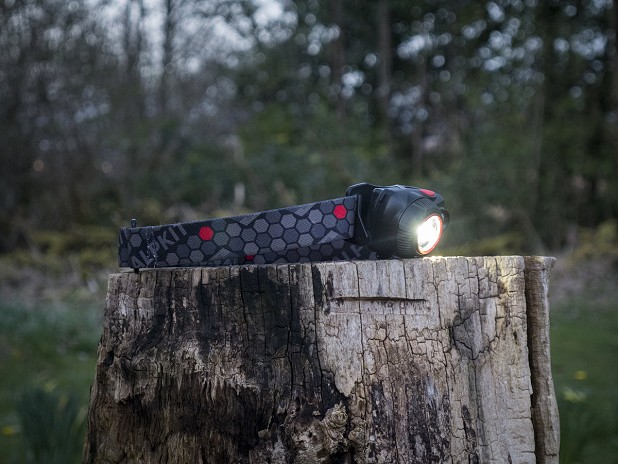
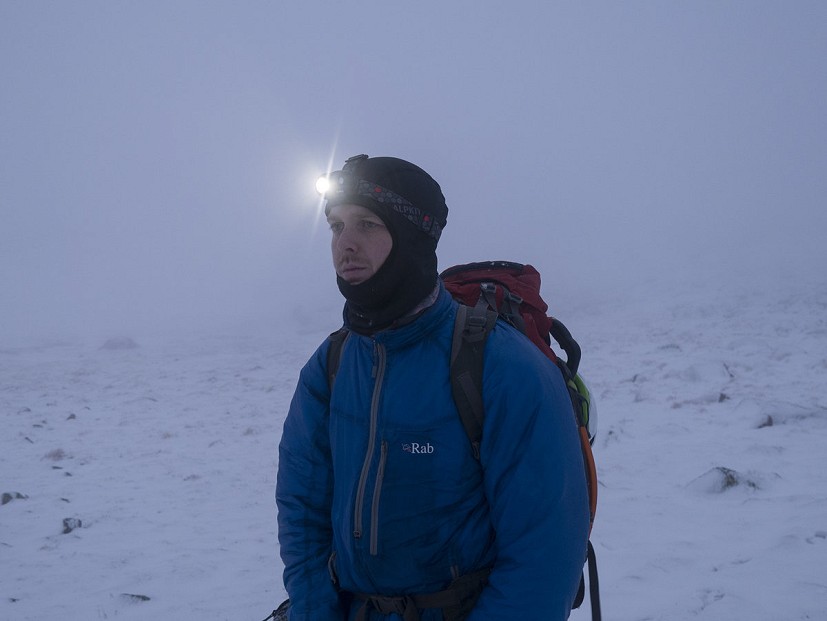

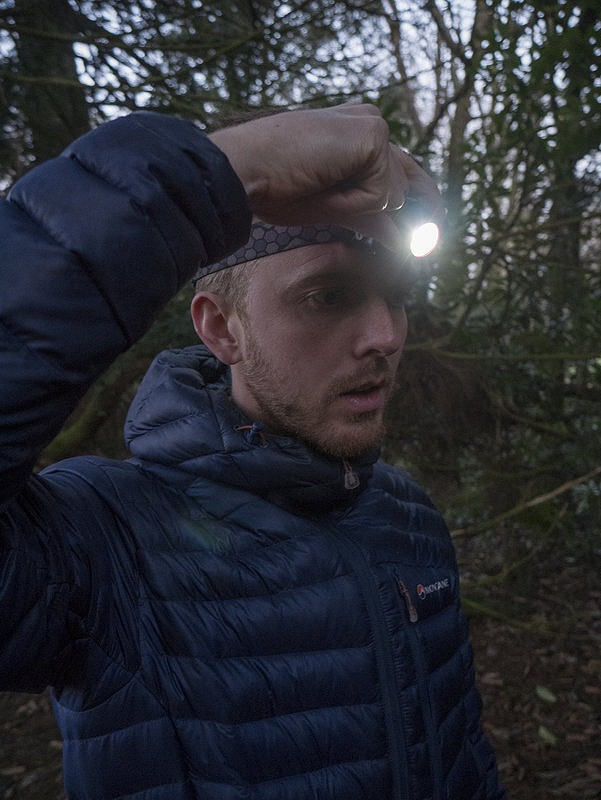
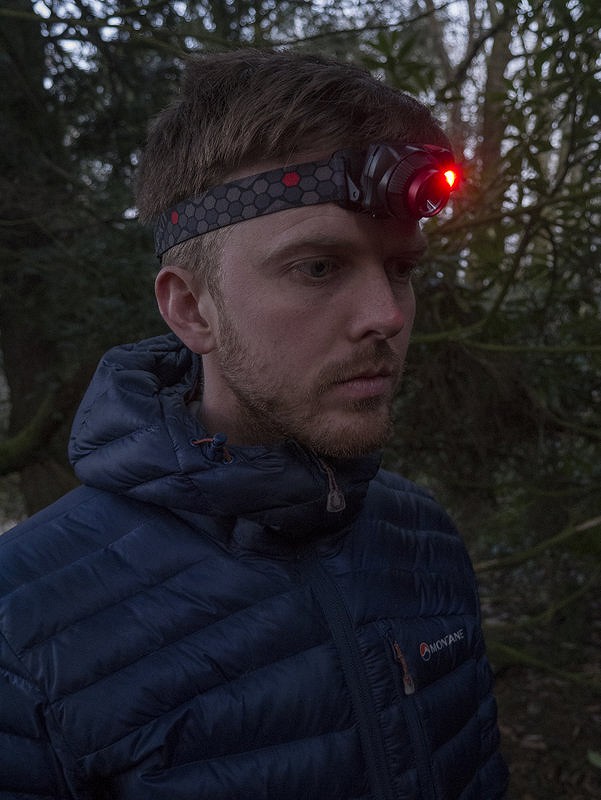

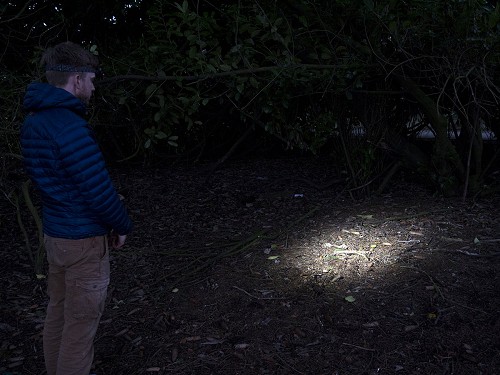
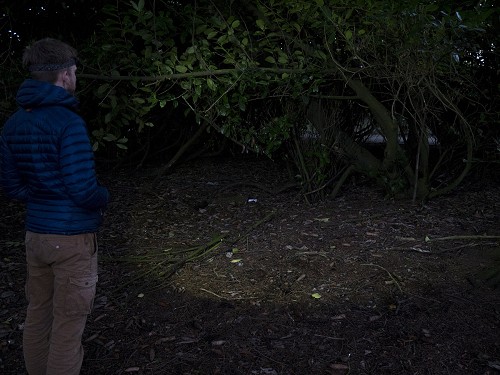
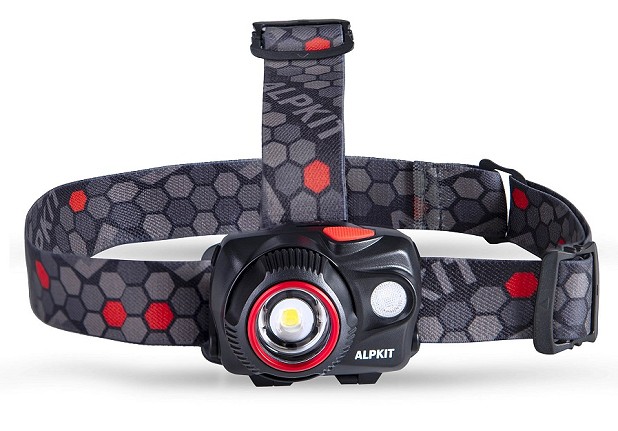

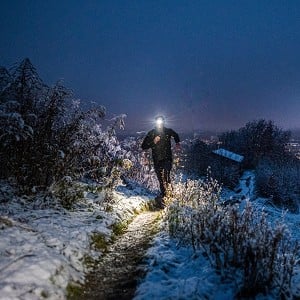

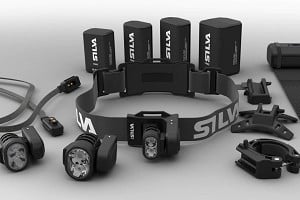
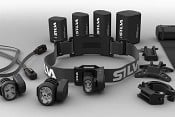
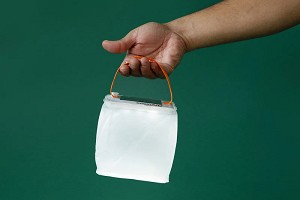

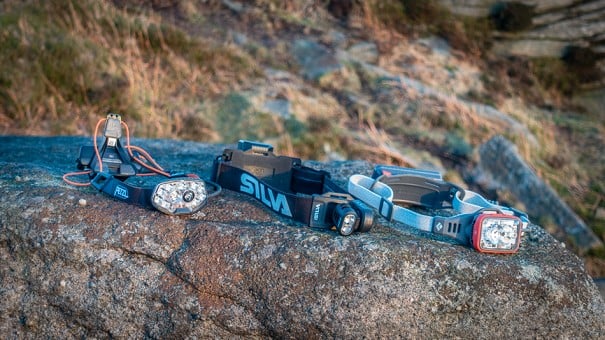

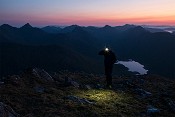



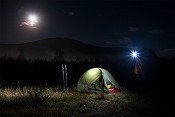
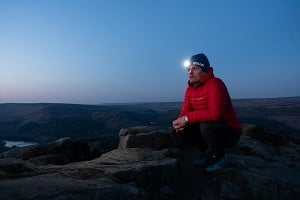
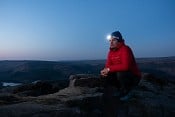
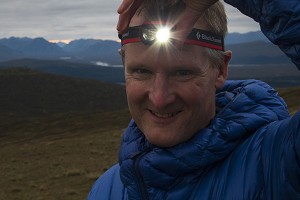

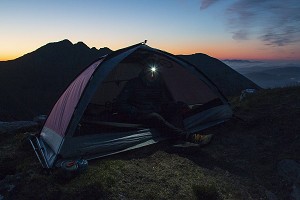
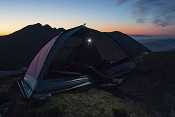
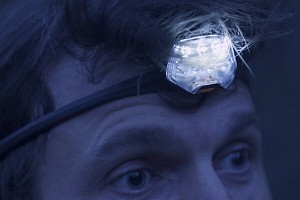
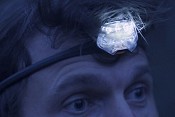

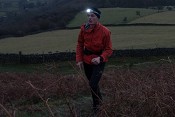

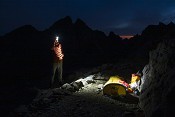
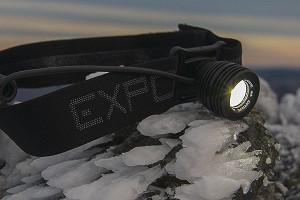
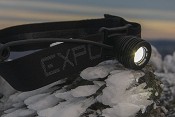


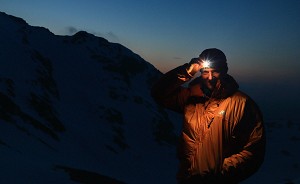



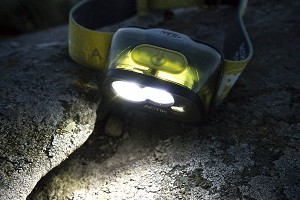
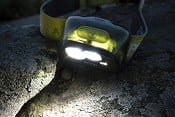


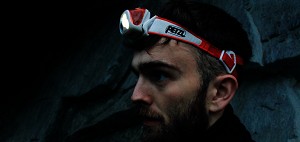

Comments